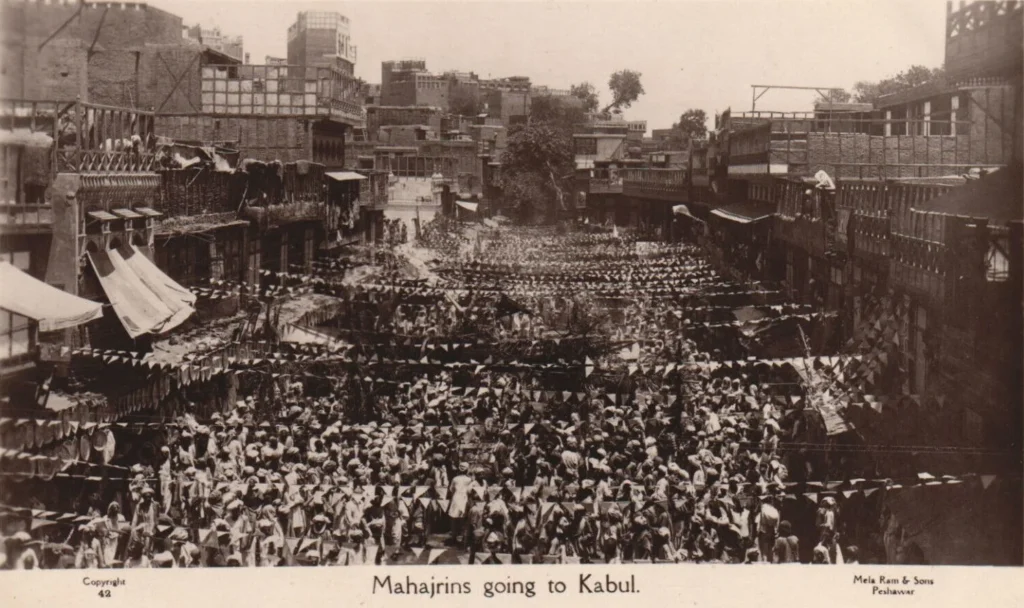In recent months, a sharp and coordinated diplomatic and media propaganda campaign has emanated from Kabul. The target is Pakistan. As Islamabad implements its “Illegal Foreigners Repatriation Plan” (IFRP), forcing the return of hundreds of thousands of Afghans, the Taliban regime has seized the moral high ground. Their official statements express “serious concerns”, condemning the deportations and painting Pakistan as a hostile neighbor betraying its Muslim brothers. This narrative, however, is a masterclass in political diversion, a potent propaganda tool designed to mask a catastrophic failure at home and a deeply cynical history.
The Historical Precedent: Dar al-Islam vs. Dar al-Harb
This ideological confrontation is not new. It is rooted in a 19th-century colonial discourse. Following the 1803 fatwa of Shah Abdul Aziz Dehlavi, which declared British India to be a Dar al-Harb (Abode of War), a powerful idea took root. If India was the “Abode of War,” then its neighboring, independent Afghanistan was its natural opposite: Dar al-Islam (Abode of Islam), a sanctuary for the faithful. This concept was more than theology; it was a political statement that suggested migration (hijrat) was a religious duty for Muslims who could not live under infidel rule. This historical propaganda would soon be put to a devastating, real-world test.
The 1920 Hijrat: A Test of Dar al-Islam
That test came during the Khilafat Movement in 1920. Spurred by religious leaders and an explicit invitation from Afghanistan’s King Amanullah Khan, who offered asylum to his Indian Muslim brethren, tens of thousands embarked on the hijrat. These muhajireen (migrants) sold their homes, land, and possessions, believing they were moving to a promised Islamic sanctuary. The reality they faced was a brutal betrayal. Overwhelmed by the sheer number of arrivals, the Afghan state’s hospitality dissolved.
On August 12, 1920, King Amanullah Khan abruptly reversed his policy, sealing the borders and ordering the migration to stop. The muhajireen were trapped and destitute. Their journey became a “calamity”, and the road to Kabul was reportedly littered with the graves of those who perished from disease and exhaustion. Afghanistan, in its first great test as Dar al-Islam, had failed catastrophically by rejecting the very refugees it had invited.
A Forty-Year Legacy vs. a History of Rejection
This historical failure makes the Taliban’s current accusations against Pakistan particularly hollow. Pakistan’s four-decade history of hosting Afghan refugees is, despite its current regrettable policy, unparalleled globally. The first wave arrived after the 1979 Soviet invasion, with millions finding shelter. By the late 1980s, Pakistan hosted over 3.5 million Afghans. A second wave fled the civil war and the first Taliban regime in the 1990s. The third major wave arrived after August 2021, when an estimated 600,000 Afghans fled the new Taliban regime.
Before the 2023 repatriation plan, Pakistan hosted between 3.7 and 4.4 million Afghans, including 1.3 million registered (PoR) refugees and millions more undocumented or with Afghan Citizen Cards. This legacy of absorption, which has profoundly strained Pakistan’s economy and social fabric, stands in stark contrast to Afghanistan’s 1920 rejection and its current role in actively destabilizing Pakistan by allegedly providing sanctuary to TTP terrorists, the very security threat Islamabad cites as the primary driver for the deportations.
Why Afghans Flee the “Abode of Justice”
The Taliban’s propaganda labels their state a Dar al-Adl (Abode of Justice), a “true Islamic system”.But the post-2021 exodus is a direct indictment of this claim. Afghans are not being pulled by opportunity; they are being pushed by oppression. The reasons are clear and devastating. First is the complete socio-economic collapse. The 2021 takeover triggered an immediate halt to international aid, which had financed 75-80% of all public spending. The economy contracted by over 20%, vaporizing jobs and plunging the nation into one of the world’s worst humanitarian crises. Today, an estimated 23.7 million Afghans require humanitarian assistance to survive.
Second is the Taliban’s war on women, described by UN experts as “gender apartheid”. With over 80 edicts, the regime has systematically erased women from public life, banning them from secondary and higher education and almost all forms of employment. Finally, the “justice” of the Dar al-Adl is a system of terror. UN reports document widespread and systematic human rights violations, including the extrajudicial killings of former government officials, arbitrary detentions of journalists, systematic torture, and the total political exclusion of ethnic and religious minorities like the Shia-Hazara.
The Propaganda of a Scapegoat: Pakistan vs. Other Hosts
The Taliban’s propaganda machine is sharply focused on Pakistan, yet the treatment of Afghan refugees in other countries is often far worse. Neighboring Iran, which hosts millions, is engaged in a “staggering” campaign of mass forced returns. UN experts reported that in 2025 alone, over 1.5 million Afghans were forced back from Iran, including 410,000 who were deported in just a few months.
The IOM noted that 70% of returnees from Iran were forcibly returned, and human rights groups describe systemic discrimination and a complete lack of a functioning asylum process. Similarly, Turkey, a key transit route to Europe, is not a haven. Human Rights Watch has documented Turkish border guards systematically pushing Afghans back, subjecting them to beatings, torture, and illegal deportations. Even Afghans seeking resettlement in Western countries like Germany are often left in a state of limbo.
At the same time, the EU contributes to human rights violations by funding Turkey’s harsh border management. Despite this widespread, and in many cases more brutal, mistreatment across the region, the Taliban’s official propaganda remains disproportionately aimed at Pakistan. This is not a principled defense of human rights; it is a calculated political strategy to deflect blame and scapegoat a neighbor for a crisis the Taliban itself engineered.
Conclusion
The Taliban’s propaganda campaign against Pakistan is a cynical attempt to rewrite history and obscure the present. It exploits the very real suffering of Afghan refugees to hide the fact that their “Abode of Justice” is a failed state that produces refugees on a mass scale. The 1920 Hijrat movement proved Afghanistan’s unwillingness to be a Dar al-Islam for those seeking refuge. The 2021-2025 crisis proves the Taliban’s Dar al-Adl is incapable of being a home for its own citizens.
The ultimate hypocrisy is this: the Taliban’s regime creates the conditions that force its people to flee, and then condemns the neighbor that hosted them for forty years when it finally buckles under the strain, a strain exacerbated by security threats that Kabul refuses to address. This is the final, hollow failure of the Taliban’s ideological propaganda.



